| Guru Gobind Singh (1666 to 1708) | |
| Full Name : | Gobind Rai |
| Personal Details | |
| Birth : | Friday, January 5, 1666 in Patna, Bihar, India |
| Guruship : | 1675 to 1708 |
| Joti Jot : | Thursday, 21 October, 1708 atNanded |
| Family | |
| Parents : | Guru Tegh Bahadur & Mata Gujri |
| Brother/Sisters : | -N.A- |
| Spouse : | Mata Jeeto aka Mata Sundri |
| Children : | Zorawar Singh, Ajit Singh, Jujha Singh, Fateh Singh |
| Other Details | |
| Bani in GGS: | N.A |
| Other Info: | Wrote Dasam Granth andSarabloh Granth Creation of Khalsa Panth Fought wars of defense for righteousness |
Guru Gobind Singh ji (Gurmukhi: ਗੁਰੂ ਗੋਬਿੰਦ ਸਿੰਘ) (Friday, January 5, 16661, in Patna, Bihar,India - Thursday, 21 October, 1708) was born "Gobind Rai" and was the tenth and last of the ten human form Gurus of Sikhism. He became Guru on November 24, 1675 at the age of nine, following in the footsteps of his father Guru Teg Bahadur ji.
Before Guru ji left his mortal body for his heavenly abode, he nominated Sri Guru Granth Sahib ji(SGGS) as the next perpetual Guru of the Sikhs. Guru Gobind Singh molded the Sikh religion into its present shape, with the formation of the Khalsa fraternity and completion of the Guru Granth Sahib as we find it today, which some will say was his greatest act.
"If we consider the work which (Guru) Gobind (Singh) accomplished, both in reforming his religion and instituting a new code of law for his followers, his personal bravery under all circumstances; his persevering endurance amidst difficulties, which would have disheartened others and overwhelmed them in inextricable distress, and lastly his final victory over his powerful enemies by the very men who had previously forsaken him, we need not be surprised that the Sikhs venerate his memory. He was undoubtedly a great man." (W, L. McGregor)
The tenth Guru (teacher) of the Sikh faith, was born Gobind Rai. It may not be out of context to say here that throughout the chronicles of human history, there was no other individual who could be of more inspiring personality than Guru Gobind Singh.
Guru Gobind Singh Ji infused the spirit of both sainthood and soldier in the minds and hearts of his followers to fight oppression in order to restore justice, peace, righteousness (Dharma) and to uplift the down-trodden people in this world.
It is said that after the martyrdom of his father, Guru Tegh Bahadur, the tenth Master declared that he would create such a Panth (Sect) which would challenge the tyrant rulers in every walk of life to restore justice, equality and peace for all of mankind. As a prophet, the Guru is unique.
His teachings are very scientific and most suitable for all times. Unlike many other prophets he never called himself God or 'the only son of God.' Instead he called all people the sons of God sharing His Kingdom equally. For himself he used the word 'slave' or servant of God.
"Those who call me God, will fall into the deep pit of hell. Regard me as one of his slaves and have no doubt whatever about it. I am a servant of the Supreme Being; and have come to behold the wonderful drama of life."
Extracts from Guru Gobind Singh's writings;
"God has no marks, no colour, no caste, and no ancestors, No form, no complexion, no outline, no costume and is indescribable.
He is fearless, luminous and measureless in might. He is the king of kings, the Lord of the prophets.
He is the sovereign of the universe, gods, men and demons. The woods and dales sing the indescribable.
O Lord, none can tell Thy names. The wise count your blessings to coin your names." (Jaap Sahib)
Birth of a Star
A splendid Divine Light shone in the darkness of the night. Pir Bhikan Shah a Muslim mystic performed his prayers in that Easterly direction (instead of towards the West, contrary to his daily practice), and guided by this Divine Light, he travelled with a group of his followers until he reached Patna Sahib inBihar.
It was here that Gobind Rai was born to Mata Gujri in 1666. It is said that Pir Bhikan Shah approached the child and offered two bowls of milk and water, signifying both the great religions of Hinduism andIslam. The child smiled and placed his hands on both bowls. The Pir bowed in utter humility and reverence to the new Prophet of all humanity.
Gobind Rai was born with a holy mission of which he tells us in his autobiography “Bachitar Natak” (Wonderous Drama). In it Guru Ji tells us how and for what purpose he was sent into this world by God. He states that before he came into this world , as a free spirit he was engaged in meditation in the seven peaked Hemkunt mountain. Having merged with God and having become One with the Unmanifest and the Infinite, God commanded him:
“I have cherished thee as my Son, and created thee to establish a religion and restrain the world from senseless acts. I stood up, folded my hands, bowed my head and replied,‘Thy religion will prevail in all the world, when it has Thy support’.”
Guru Ji describes the purpose of his coming to this world and why he emerged from the Supreme Reality in human form to carry out his Creator’s command :
“For this purpose was I born, let all virtuous people understand. I was born to advance righteousness, to emancipate the good, and to destroy all evil-doers root and branch.”
Early Life
Gobind Rai's father, Guru Tegh Bahadur, the Ninth Guru, was then travelling across Bengal and Assam. Returning to Patna in 1670, he directed his family to return to the Punjab. On the site of the house at Patna in which Gobind Rai was born and where he spent his early childhood now stands a sacred shrine, Sri Patna Sahib Gurdwara, Bihar.
Gobind Rai was escorted to Anandpur (then known as Chakk Nanaki) on the foothills of the Sivaliks where he reached in March 1672 and where his early education included reading and writing of Punjabi, Braj, Sanskrit and Persian. He was barely nine years of age when a sudden turn came in his life as well as in the life of the community he was destined to lead.
Kashmiri Brahmins come to Anandpur
Early in 1675, a group of Kashmiri brahmins under the leadership of Pandit Kirpa Ram, mad in desperation by the religious fanaticism of the Mughals General, Iftikar Khan, (he had threatened them with forced conversion to Islam) visited Anandpur to seek Guru Tegh Bahadur's advice. Aurangzeb had ordered the forced conversion of all Hindus and thought that if the respected Kashmiri brahmans accepted Islam, others in the country would be easily converted. They had been given six months to decide or suffer the consequences. Time was running out!
As the Guru sat reflecting what to do, young Gobind Rai, arriving there in company with his playmates, asked why he looked so preoccupied. The father, as records Kuir Singh in his Gurbilas Patshahi 10, replied, "Grave are the burdens the earth bears. She will be redeemed only if a truly worthy person comes forward to lay down his head. Distress will then be expunged and happiness ushered in."
"None could be worthier than you to make such a sacrifice," remarked Gobind Rai in his innocent manner.
Guru Tegh Bahadur advised the brahmins to return to their village and tell the authorities that they would accept Islam if Guru Tegh Bahadurcould first be persuaded to do so.
Father Guru's martyrdom
- Main article: Martyrdom of Guru Tegh Bahadur
Soon afterwards the Guru with a few followers proceeded to the imperial capital, Delhi. After watching the tortured deaths of three of his followers he, as well, refused to convert and was beheaded on November 11, 1675. The 13 year old Gobind Rai, ordained as the next Guru before his father departed Anandpur, was formally installed as Guru Gobind Singh on the Baisakhi day of March 1676. In the midst of his engagement with the concerns of the community, he gave attention to the mastery of physical skills and literary accomplishment. He had grown into a comely youth spare, lithe of limb and energetic.
He had a natural genius for poetic composition and his early years were assiduously given to this pursuit. The Var Sri Bhagauti Ji Ki, popularly called Chandi di Var. written in 1684, was his first composition and his only major work in the Punjabi language. The poem depicted the legendary contest between the gods and the demons as described in the Markandeya Purana. The choice of a warlike theme for this and a number of his later compositions such
as the two Chandi Charitras, mostly in Braj, was made to infuse martial spirit among his followers to prepare them to stand up against injustice and tyranny.For the first 20 years or so of his life, Guru Gobind Singh lived peacefully at Anandpurpracticing arms and exercises to complete his training as a soldier. He also studied Persian and Sanskrit and engaged 52 poets to translate the Hindu epics. Stories of ancient heroes were translated into Punjabi in order to create the martial spirit among the Sikhs. The Guru also wrote several compositions including Jaap Sahib, Akal Ustat and Sawayas during this period. He also established a Gurdwara at Paonta Sahib on the banks of the river Jamna.
Stay at Paonta Sahib
Much of Guru Gobind Singh's creative literary work was done at Paonta he had founded on the banks of the River Yamuna and to which site he had temporarily shifted in April 1685. Poetry as such was, however, not his aim. For him it was a means of revealing the divine principle and concretizing a personal vision of the Supreme Being that had been vouchsafed to him. His Jap Sahib, Swayas and the composition known as Akal Ustat are in this tenor.
Through his poetry he preached love and equality and a strictly ethical and moral code of conduct. He preached the worship of the One Supreme Being, deprecating idolatry and superstitious beliefs and observances. The glorification of the sword itself which he eulogized as Bhagauti was to secure fulfilment of God's justice. The sword was never meant as a symbol of aggression, and it was never to be used for self-aggrandizement. It was the emblem of manliness and self-respect and was to be used only in self-defence, as a last resort. For Guru Gobind Singh said in a Persian couplet in his Zafarnamah:
- "When all other means have failed, It is but lawful to take to the sword."
Martial training
During his stay at Paonta, Guru Gobind Singh availed himself of his spare time to practice different forms of manly exercises, such as riding, swimming and archery. His increasing influence among the people and the martial exercises of his men excited the jealousy of the neighbouring Rajput hill rulers who led by Raja Fateh Chand of Garhwal collected a host to attack him.
But they were worsted in an action at Bhangam, about 10 km north-east of Paonta, in September 1688. Soon thereafter Guru Gobind Singh left Paonta Sahib and returned to Anandpur. The Guru and his Sikhs were involved in a battle with a Mughal commander, Alif Khan, at Nadaur on the left bank of the Beas, about 30 km south-east of Kangra, in March 1691.
Describing the battle in stirring verse in Bachitra Natak, he said that Alif Khan fled in utter disarray "without being able to give any attention to his camp." Among several other battles that occurred was the Husain battle (20 February 1696) fought against Husain Khan, an imperial general, which resulted in a decisive victory for the Sikhs.
Following the appointment in 1694 of the liberal Prince Muazzam (later Emperor Bahadur Shah) as viceroy of north-western region including Punjab, there was however a brief respite from pressure from the ruling authority. In Sambat 1756 (1699 A.D), Guru Gobind Singh issued directions to Sikh sangats or communities in different parts not to acknowledge masands, the local ministers, against whom he had heard complaints. He asked the Sikhs to send their offerings directly to Anandpur.
Battle of Bhangani
- Main article: Battle of Bhangani
The Guru admonished hill Rajas including Raja Bhim Chand for giving their daughters to the Moghuls as tribute for holding their positions. His efforts at winning their support against Aurangzeb bore no fruit. On the contrary, the hill Rajas conspired with the Moghul armies to put down the power of Guru Gobind singh. They however faced defeat several times at the hands of the comparatively small Sikh Army.
ilsBattle of Nadaun (Hussaini Yudh)
The Masands
The Guru received various complaints against the priests, masands who robbed the poor Sikhs and misappropriated the collections. Guru Sahib abolished this order and severly punished the miscreants. Hereafter, the faithful were to bring their offerings directly to the Guru at the time of the annual Vaisakhi fair.
The Guru wanted to create a strong self-respecting community. He inspired the Sikhs with courage and heroism and a life of simplicity and hard work. He started an arms factory at Anandpur in order to manufacture swords and lances needed for his soldiers. Once when the Brahmins insisted that he should offer worship to goddess Durga in order to seal victory, he agreed and kept up the farce till nothing came out of it. At the crucial moment, the Guru unsheathed his sword exclaiming, “The sword is the Durga which will give us victory over our enemies.
The Guru wanted to create a strong self-respecting community. He inspired the Sikhs with courage and heroism and a life of simplicity and hard work. He started an arms factory at Anandpur in order to manufacture swords and lances needed for his soldiers. Once when the Brahmins insisted that he should offer worship to goddess Durga in order to seal victory, he agreed and kept up the farce till nothing came out of it. At the crucial moment, the Guru unsheathed his sword exclaiming, “The sword is the Durga which will give us victory over our enemies.
Sikhs, he instructed, should come to Anandpur straight without any intermediaries. The Guru thus established direct relationship with his Sikhs. The institution of the Khalsa was given concrete form on 30 March 1699 when Sikhs had gathered at Anandpur in large numbers for the annual festival of Baisakhi.
Creation of the Khalsa
An open air diwan was held in Kesgarh Sahib at Anandpur. The Guru drew his sword and in a thundering voice said, "I want one head, is there any one who can offer me?"
This most unusual call caused some terror in the gathering and the people were stunned. There was dead silence. The Guru made a second call. Nobody came forward. There was still more silence. On the third call there raised Daya Ram, a khatri of Lahore who said, "O true king, my head is at your service."
The Guru took Daya Ram by the arm and led him inside a tent. A blow and thud were heard. Then the Guru, with his sword dripping with blood, came out and said, "I want another head, is there anyone who can offer?" Again on third call Dharam Das, a Jat from Delhi came forward and said, "O true king! My head is at thy disposal."
The Guru took Dharam Das inside the tent, again a blow and thud were heard, and he came out with his sword dripping with blood and repeated, "I want another head, is there any beloved Sikh who can offer it?"
Upon this some people in the assembly remarked that the Guru had lost all reason and went to his mother to complain.
Mohkam Chand, a calico priner/tailor of Dwarka (west coast of India) offered himself as a sacrifice. The Guru took him inside the tent and went through the same process. When he came out, he made a call for the fourth head. The Sikhs began to think that he was going to kill all of them.
Some of them ran away and the others hung their heads down in disbelief. Himmat Chand, a cook of Jagan Nath Puri, offered himself as a fourth sacrifice. Then the Guru made a fifth and the last call for a fifth head. Sahib Chand, a barber of Bidar (in central India), came forward and the Guru took him inside the tent. A blow and thud were heard.
The last time he stayed longer in the tent. People began to breathe with relief. They thought may be the Guru has realised "his mistake" and has now stopped.
The panj pyare
- Main article: Panj Piare
The Guru now clad his five volunteers in splendid garments. They had offered their heads to the Guru, and the Guru had now given them himself and his glory. When they were brought outside, they were in the most radiant form. There were exclamations of wonder and the sighs of regret on all sides. Now people were sorry for not offering their heads.
Since the time of Guru Nanak, Charan Pauhal had been the customary form of initiation. People were to drink the holy water which had been touched or washed by the Guru's toe or feet. The Guru proceeded to initiate them to his new order (Khande di Pauhal) by asking the five faithful Sikhs to stand up.
He put pure water into an iron vessel or Bowl (Batta of Sarbloh) and stirred it with a Khanda (two edged small sword). While stirring the water with Khanda, he recited Gurbani (Five Banis- Japji, Jaap Sahib, Anand Sahib, Swayas, and Chaupai). Sugar crystals called 'Patasas' which incidently the Guru's wife, Mata Sahib Kaur, had brought at that moment, were mixed in the water.
Amrit Sanchar
- Main article: Amrit Sanchar
The Guru then stood up with the sacred Amrit (nectar) prepared in the iron bowl. Each of the five faithful, by turn, each kneeling upon his left knee, looked up to the Master to receive the divine amrit. He gave five palmfuls of Amrit to each of them to drink and sprinkled it five times in the eyes, asking them to repeat aloud with each sprinkle, "Waheguru Ji ka Khalsa, Waheguru Ji Ki Fateh." (This means: Khalsa belongs to God and all triumph be to His Name) Then he anointed with five sprinkles in the hair.
In this way Amrit was administered to the five faithful from the same bowl. After that he asked them to sip Amrit from the same bowl to signify their initiation into the casteless fraternity of the Khalsa. All the five faithful were baptized in this way by the Guru who then called them the 'PANJ PYARE' or Five Beloved Ones.
He gave them the appellation of SINGHS (Lions) and they were named from Daya Ram to Daya Singh, Dharam Das to Dharam Singh, Mohkam Chand to Mohkam Singh, Himmat Chand to Himmat Singh, and Sahib Chand to Sahib Singh. The Guru then addressed them as the supreme, the liberated ones, pure ones and he called them THE KHALSA.
He then ordained them to do the following:
I. First they must wear the following articles whose names begin with 'K':
The 5Ks
- Main article: 5Ks
- 1. Kesh - unshorn hair. This represents the natural appearance of sainthood. This is the first token of Sikh faith.
- 2. Kanga- A comb to clean the hair.
- 3. Kachha - An underwear to indicate virtuous character.
- 4. Kara - A Iron bracelet on the wrist, a symbol of dedication to the Divine Bridegroom.
- 5. Kirpan - A sword symbolising dignity, power and unconquerable spirit.
II. They must observe the following guidelines:
- 1. Not to remove hair from the body.
- 2. Not to use Tobacco or other intoxicants (alcohol).
- 3. Not to eat or touch Kuttha (Halal or Kosher) meat of an animal (see Hukamnama by Sri Guru Gobind Singh ji to the Sikhs of Kabul).
- 4. Not to commit adultery- 'Par nari ki sej, bhul supne hun na jayo' (never enjoy, even in dream, the bed of a woman other than your own wife) (A supplementary ordinance was issued that any one who did not observe any of the four directives, must be re- baptized, pay a fine, and promise not to offend any more; or he must be excommunicated from the Khalsa).
III. They must rise at dawn, bathe, meditate on Gurmantar-'Waheguru', Moolmantar- the preamble of Japji, and recite five banis- Japji, Jap Sahib and Swayas in the morning; Rehras in the evening; and Kirtan Sohela at bed time at night.
IV. They must not worship idols, cemeteries, or cremation grounds, and must believe only in One Immortal God. The Guru further spelled out that they should practice arms, and never show their backs to the foe in the battle field. They should always be ready to help the poor and protect those who sought their protection. They were to consider their previous castes erased, and deem themselves all brothers of one family. Sikhs were to intermarry among themselves.
Guru asks for Amrit
After the Guru had administered Amrit to his Five Beloved Ones, he stood up in supplication and with folded hands, begged them to baptize him in the same way as he had baptized them. He himself became their disciple (Wonderful is Guru Gobind Singh, himself the Master and himself the disciple).
The Five Beloved Ones were astonished at such a proposal, and represented their own unworthiness, and the greatness of the Guru, whom they deemed God's Vicar upon earth. They asked him why he made such a request and why he stood in a supplicant posture before them. He replied," I am the son of the Immortal God. It is by His order I have been born and have established this form of baptism. They who accept it shall henceforth be known as the KHALSA.
The Khalsa is the Guru and the Guru is the Khalsa. There is no difference between you and me. As Guru Nanak seated Guru Angad on the throne, so have I made you also a Guru. Wherefore administer the baptismal nectar to me without any hesitation." Accordingly the Five Beloved Ones baptized the Guru with the same ceremonies and injunctions he himself had employed.
The rise of the Khalsa
The Guru was then named Gobind Singh instead of Gobind Rai. Guru Gobind Singh was the first one to take Amrit from the Khalsa, the Five Beloved Ones. About 80,000 men and women were baptized within a few days at Anandpur. "The creation of the Khalsa was the greatest work of the Guru. He created a type of superman, a universal man of God, casteless and country less. The Guru regarded himself as the servant of the Khalsa. He said, "To serve them pleases me the most; no other service is so dear to my soul." The Khalsa was the spearhead of resistance against tyranny." (Miss Pearl, S. Buck)
The creation of the Khalsa created a sense of unity among the Sikhs and their supporters. This unity and the resulting perceived strength in the Sikhs did not go well with the local rulers. The continuous gatherings at Anandpur sahib and the presence of many thousands of the congregation, some armed with fierce weapons caused anguish with the surrounding hill Rajas. These developments most alarmed the caste ridden Rajput chiefs of the Sivalik hills. They perceived the Sikhs as lower caste beings who had posed no danger to their authority. However, the creation of the Khalsa changed that. Firstly, it disturbed their system of discrimination and division; secondly, they could see that the forces of the Guru were becoming dangerous in number and in armaments.
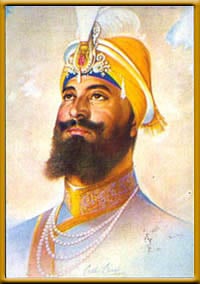
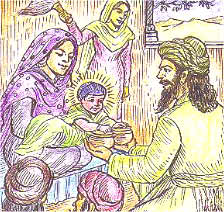
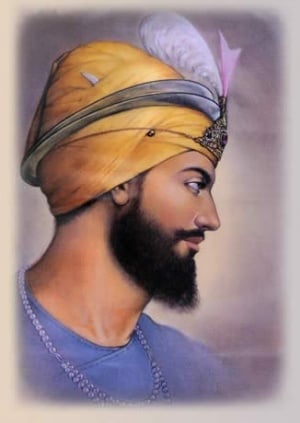
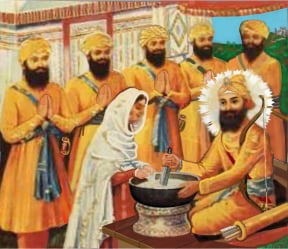
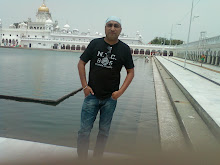
No comments:
Post a Comment